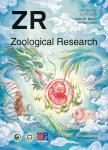Diversity scaling of human vaginal microbial communities
Diversity scaling of human vaginal microbial communities作者机构:Computational Biology and Medical Ecology LabState Key Laboratory of Genetic Resources and EvolutionKunming Institute of ZoologyChinese Academy of SciencesKunming Yunnan 650223China Center for Excellence in Animal Evolution and GeneticsChinese Academy of SciencesKunming Yunnan 650223China Kunming College of Life SciencesUniversity of Chinese Academy of SciencesKunming Yunnan 650223China
出 版 物:《Zoological Research》 (动物学研究(英文))
年 卷 期:2019年第40卷第6期
页 面:587-594页
核心收录:
学科分类:0710[理学-生物学] 07[理学] 09[农学]
主 题:human vaginal microbial Diversity
摘 要:DEAR EDITOR,The composition and diversity of the human vaginal microbial community have been investigated intensively due to the diversity-stability relationship (DSR)-based hypothesis for bacterial vaginosis (BV) etiology, which was first proposed in the 1990s and has received renewed interest in recent years. Nevertheless, diversity changes (scaling) across individuals in a cohort or population have not yet been addressed, which is significant both theoretically and practically. Theoretically, biodiversity scaling is the core of biogeography, and practically, inter-subject heterogeneity is critical for understanding the etiology and epidemiology of human microbiome-associated diseases such as BV. Here we applied the diversity-area relationship (DAR), a recent extension to the classic species-area relationship (SAR), to study diversity scaling of the vaginal microbiome by reanalyzing reported data collected from 1 107 postpartum women. The model used here characterized the power-law (or its extension) relationships between accrued diversity and areas (numbers of individuals), upon which four biogeographic profiles were thus defined. Specifically, we established the DAR profile (relationship between diversity scaling parameter and so-termed diversity order (q)), similarly pair-wise diversity overlap (PDO) profile, maximal accrual diversity (MAD) profile, and ratio of individual-level to population-level diversity (RIP) profile. These four profiles offer valuable tools to assess and predict diversity scaling (changes) in the human vaginal microbiome across individuals, as well as to understand the dynamics of vaginal microbiomes in healthy women.



